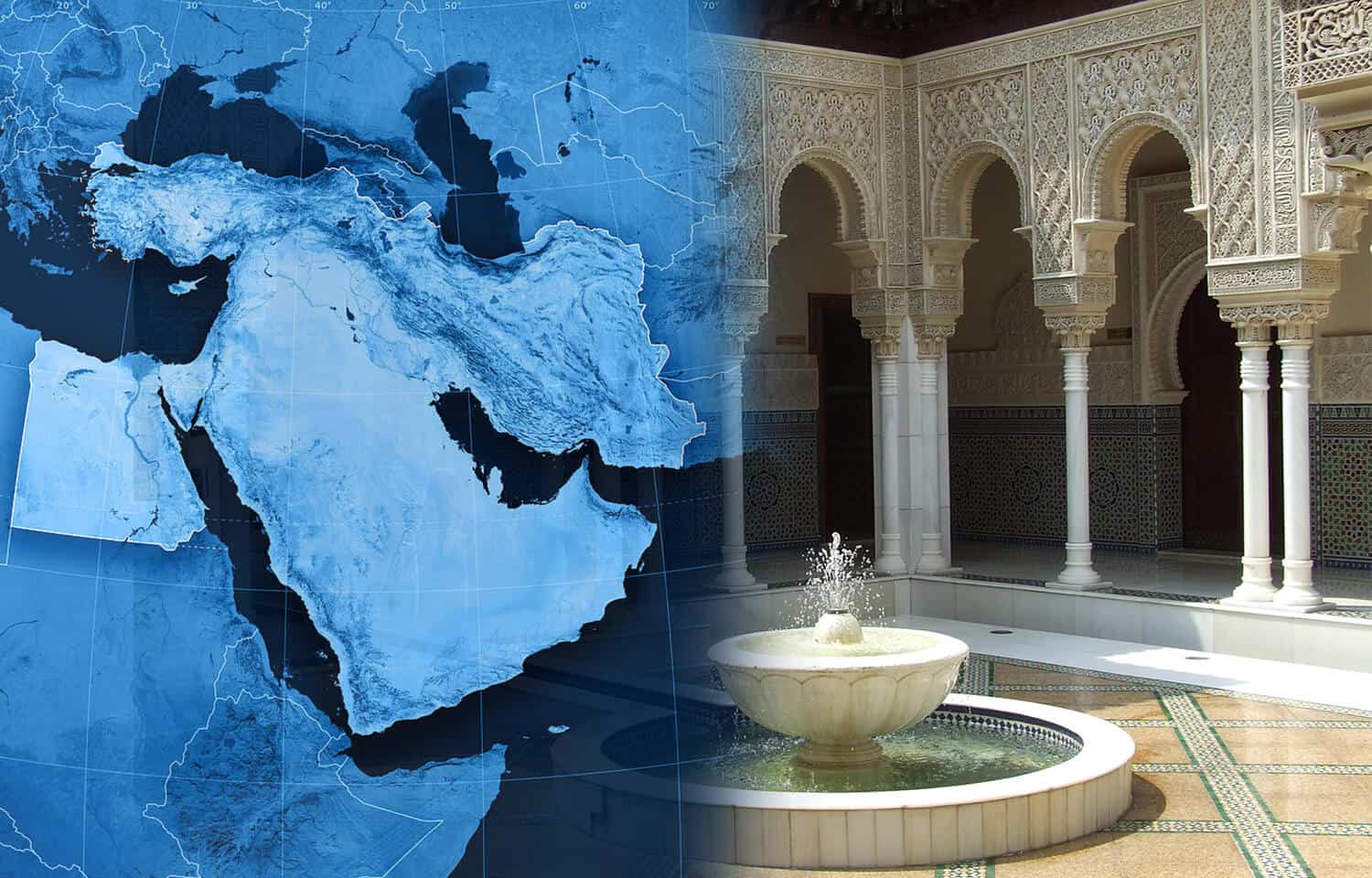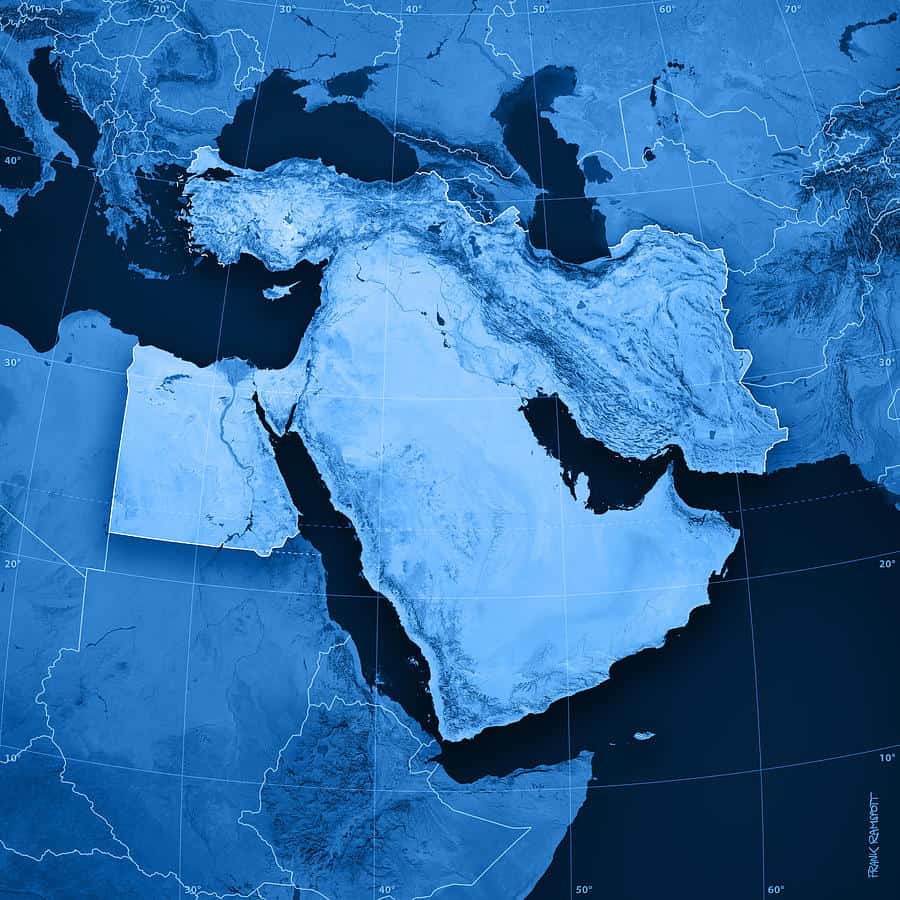What are the main languages spoken in the Middle East?

The Middle East region is one of the most diversified places in terms of cultures and languages.
Some people refer to the Middle East as “The Arab World”, although it has other ethnic groups.
Many resources mention that the Middle East region is comprised of the following countries: Egypt – Jordan – Iran – Turkey – Iraq – Saudi Arabia – Bahrain – United Arab Emirates – Yemen – Syria – Israel – Palestine – Lebanon – Oman – Kuwait – Qatar.
Is Arabic the Only Language in the Middle East?
Actually no!, many Middle Eastern countries are part of the Arab world and Arabs are the majority in the region, but there are many other countries in the Middle East where the native language is not Arabic.
So, we can’t say Arabic is the main language of the Middle East.
In this article, I will talk about the five main languages in the Middle East and their dialects.
Language #1: Arabic
Arabic is the official language in Lebanon, Saudi Arabia, Egypt, Iraq, Qatar, Jordan, Kuwait, Oman, Palestine, Yemen, Syria, UAE, and Bahrain.
Sometimes translation service customers ask if Arabic is the same across all the Arab countries. The answer is yes, there is one Arabic language in all the Arab countries, but it has three levels and they are:
- Modern Standard Arabic: This is the level used for writing literature, newspapers, media, and other formal contexts.
- Colloquial (spoken) Arabic: This is used in ordinary day-to-day conversations between people. This one refers to the different dialects between Arab countries.
- Classical Arabic: This is the language of the Qur’an.
There are many various (spoken) dialects in Arabic, which can sometimes make it difficult for those from different areas of the Arab world to understand each other.
So using Modern Standard Arabic is the optimum solution for communication among them.
Additional Reading: Keys to Understanding the Middle East, Click Here
Language #2: Persian/Farsi
This is the official language of Iran.
However, the Persian language has two varieties that are spoken in two different countries: the first is Dari, which is the official language in Afghanistan, and the second is Tajik which, is the official language in Tajikistan.
There are three types of written Persian:
- Old Persian: spoken until approximately the 3rd century BCE
- Middle Persian: spoken from the 3rd century BCE to the 9th century CE
- Modern Persian: spoken in a simpler way than its old forms
The Persian Alphabet is used in the writing of Modern Iranian Persian and Afghan Persian language, It is a modified variant of the Arabic alphabet and uses different pronunciations and additional letters not found in the Arabic language. Iranian Persian has six vowels and twenty-three consonants.
Language #3: Turkish
There are around 70 to 80 million Turkish speakers around the world. Most of them live in Turkey and the rest live outside in small groups in Greece, Germany, Northern Cyprus, Austria, Bulgaria, North Macedonia, the Caucasus, and other parts of Europe and Central Asia.
Turkish has several dialects that are divided into two major groups:
- Western dialects: Danubian dialect is the only member of this group, and it is a major dialect in Turkey.
- Eastern dialects: include Eskisehir, Edirne, Razgrad, Dinler, Rumelian, Sanliurfa, Gaziantep, and Karamanli.
- Modern standard Turkish: based on the dialect of Istanbul, which is sometimes referred to as “Istanbul Turkish”. This constitutes the model of written and spoken Turkish.
The Turkish alphabet is a Latin-script alphabet used for writing the Turkish language and consists of 29 letters. It includes 8 vowels and 21 consonants and is the current official alphabet used in different eras.
Language #4: Kurdish
The Kurdish language is a West Iranian language, and it is one of the Indo-Iranian languages spoken in Kurdistan. The speakers of Kurdish are estimated to be around 20 to 40 million people.
The Kurdish language has various dialects divided into three main groups:
- Northern Kurdish: Spoken by 15 to 20 million Kurds. It is spoken from Mosul, Iraq, into the Caucasus, and is called Kurmanji.
- Central Kurdish: Spoken by 6 to 7 million Kurds. It is spoken within a broad region that stretches roughly from Orūmīyeh, Iran, to the lower reaches of traditional Kurdistan in Iraq and is called Sorani. It is the major literary form of Kurdish and is usually written in a modified Perso-Arabic script.
- Southern Kurdish: Spoken by about 3 million Kurds and consists of several less-studied dialects called Pehlewani.
Language #5: Hebrew
Another language spoken in the Middle East is Hebrew, which is primarily spoken in Israel.
Over 9 million people worldwide speak Modern Hebrew, and it is used to pray and study in Jewish communities.
Hebrew is considered the only Canaanite language people still speak. It’s the only truly successful example of a revived dead language.
There are two main dialects of Hebrew:
- The Europeanized dialect: spoken by Ashkenazi Jews of European descent.
- The Oriental dialect: is spoken by Sephardi Jews whose ancestors came to Israel from Middle Eastern countries.
There are 22 letters in the “Hebrew Alphabet” called the Aleph-bet and it does not have vowel letters. Also, it is read and written from right to left as is the Arabic Language.

Conclusion
As you can see, there is not one language in the Middle East region. The area has many ethnic and language groups. Based on your business requirements, you may need to translate your documents into one of these languages. If you like to attract large and diversified markets within the Middle East, you will need to have a multilingual content strategy.
